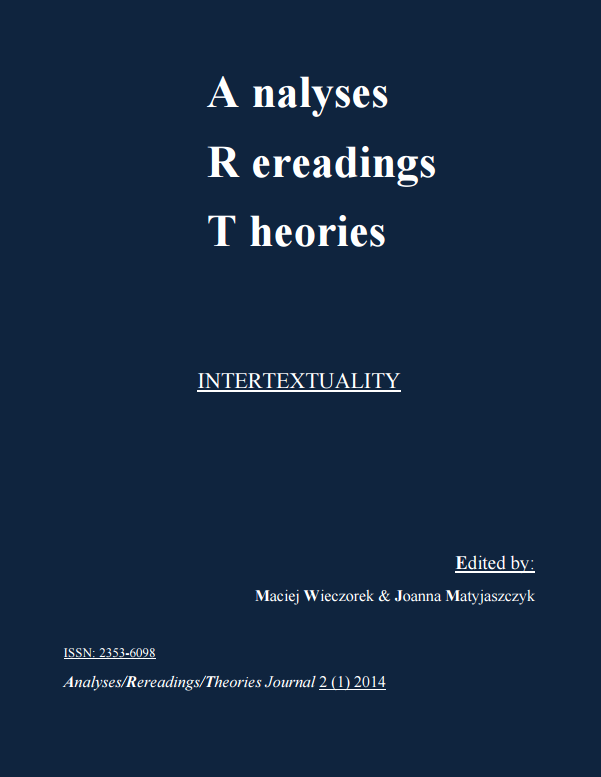The Comic Image of the Courtly Love Ideals in Le Morte D’Arthur by Sir Thomas Malory
DOI:
https://doi.org/10.18778/2353-6098.2.04Keywords:
courtly love, Malory, Arthur, knight, satireAbstract
The Arthurian legends have fascinated and inspired people for ages. Le Morte D’Arthur by Sir Thomas Malory is one of the best compilations of the stories about King Arthur and his peers. This romance deals with the enchanting world of knightly rituals and the ideals of the chivalric code. It is not a typical romance blindly glorifying the medieval world, though. Written in the time when these ideals are passing, the prose is dominated on the one hand, by melancholy and sentiment, but on the other, by irony and ambiguity. Malory seems to question the chivalric code through inconsistencies of his characters’ behaviour, and absurdity of some situations they are involved in. The paper will focus on the ambivalent and comic picture of the courtly love ideals in Malory’s prose. The main source of failure of some of the Arthurian knights in this aspect of knightly life is the clash between the real chivalric practice and the imagined ideals they pursue.
References
Archibald, Elizabeth and Anthony Stockwell Garfield Edwards, eds. A Companion to Malory. Cambridge: D.S. Brewer, 1996. Print.
Google Scholar
Baldick, Chris. The Concise Oxford Dictionary of Literary Terms. Oxford: Oxford UP, 2001. Print.
Google Scholar
Barber, Richard W. The Reign of Chivalry. Woodbridge: The Boydell P, 2005. Print.
Google Scholar
Bradbrook, Muriel C. Sir Thomas Malory. London: Longmans Green, 1958. Print.
Google Scholar
Dosanjh, Kate. “Rest in Peace: Launcelot’s Spiritual Journey in Le Morte Darthur.” Arthuriana, 16.2 (2006): 64. JSTOR. Web. 1 March 2013.
Google Scholar
DOI: https://doi.org/10.1353/art.2006.0085
Edwards, Elizabeth. “The Place of Women in the Morte Darthur.” A Companion to Malory. Eds. Elizabeth Archibald and Anthony Stockwell Garfield Edwards. Cambridge: D.S. Brewer, 1996. 37-54. Print.
Google Scholar
Lumiansky, Robert M., ed. Malory’s Originality. Baltimore: The Johns Hopkins P, 1964. Print.
Google Scholar
DOI: https://doi.org/10.1353/book.68497
Fries, Maureen. “Indiscreet Objects of Desire: Malory’s Tristram and the Necessity of Deceit.” Studies in Malory. Ed. James W. Spisak, Michigan: Kalamazoo, 1985. 87-108. Print.
Google Scholar
Malory, Thomas. Le Morte D’Arthur. 2. Ed. Janet Cowen, Harmondsworth: Penguin Books, 1969. Print.
Google Scholar
McCarthy, Terence. An Introduction to Malory. Cambridge: D.S. Brewer, 1988. Print.
Google Scholar
Moorman, Charles. “Courtly Love in Malory.” ELH: English Literary History 27 (1960): 169-71. JSTOR. Web. 20 Feb. 2013.
Google Scholar
DOI: https://doi.org/10.2307/2871877
Nagy, Gergely. “A Fool of a Knight, a Knight of a Fool: Malory’s Comic Knights.” Arthuriana 14.4 (2004): 59-74. JSTOR. Web. 20 Feb. 2013.
Google Scholar
DOI: https://doi.org/10.1353/art.2004.0058
Sanders, Charles R, and Charles E. Ward. The Morte Darthur by Sir Thomas Malory. An Abridgement with an Introduction. New York: F.S. Crofts, 1940. Print.
Google Scholar
Sir Gawain and the Green Knight. A New Translation. Ed. Marie Borroff. New York: W.W. Norton, 1967. Print.
Google Scholar
Tucker, P.E. “Chivalry in Morte.” Essays on Malory. Ed. Jack A.W. Bennet, Oxford: Clarendon P, 1963. Print.
Google Scholar
Witalisz, Władysław. “A (Crooked) Mirror for Knights – the Case of Dinadan.” Studia Anglica Posnaniensia 44 (2008): 457-62. Web. 1 Feb. 2013.
Google Scholar
Downloads
Published
How to Cite
Issue
Section
License

This work is licensed under a Creative Commons Attribution-NonCommercial-NoDerivatives 3.0 Unported License.









